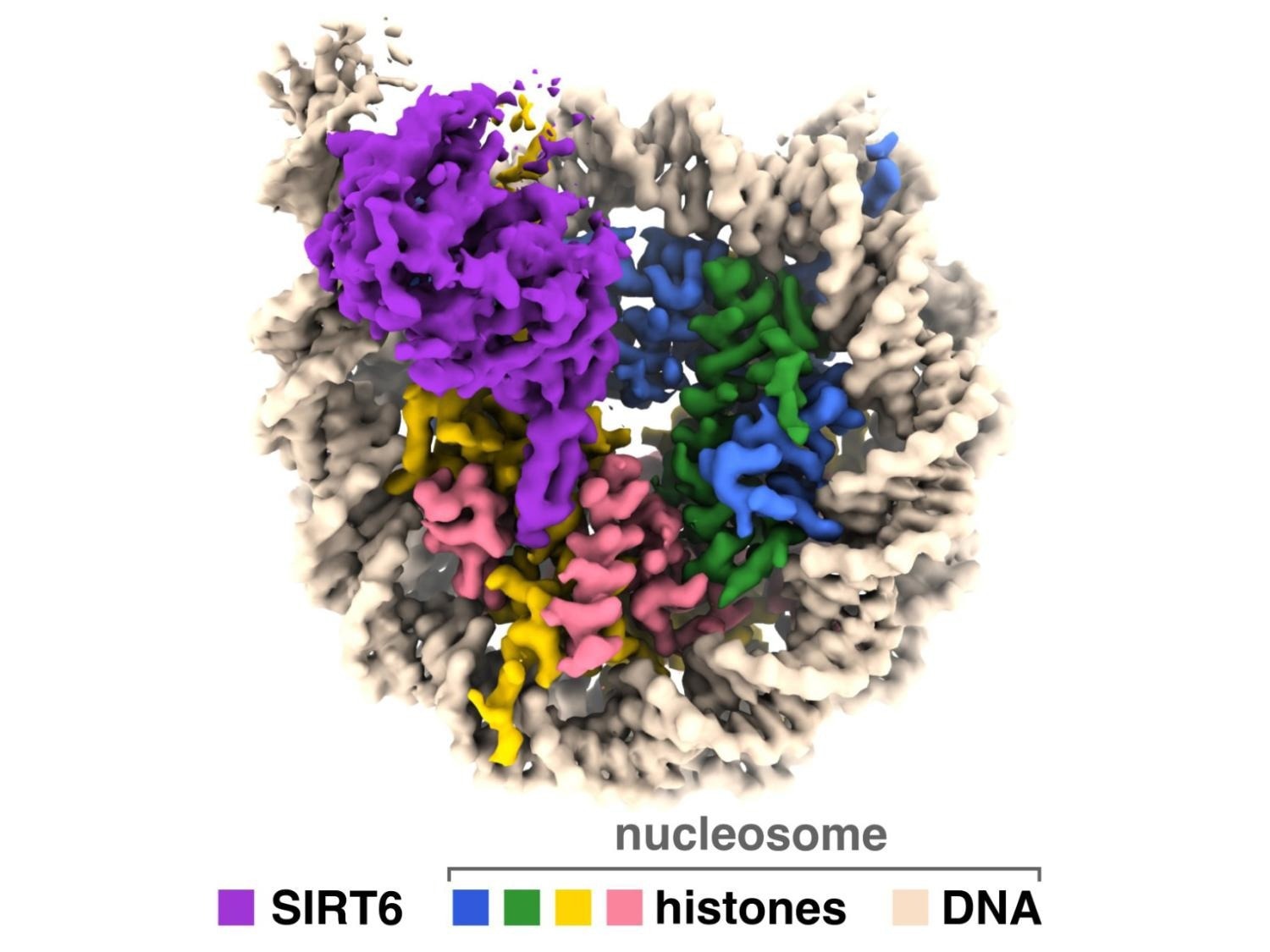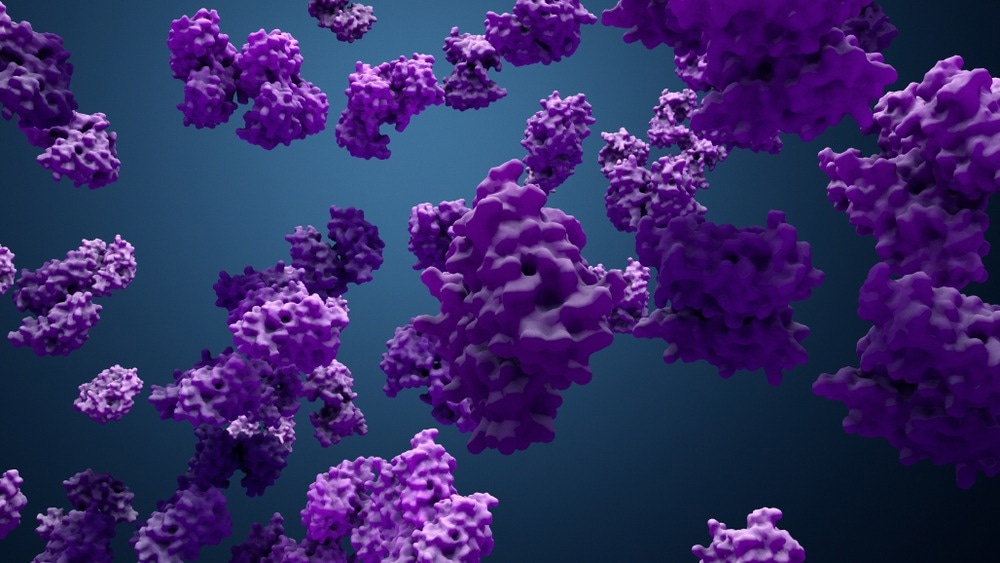An enzyme that controls aging and other metabolic processes accesses human genetic material to modify gene expression within the cell, according to a new study. Images of a sirtuin enzyme bound to a nucleosome, a tightly packed complex of DNA and proteins called histones, have been created by a team led by Penn State researchers.

New images of the SIRT6 sirtuin enzyme—which regulates aging and other metabolic processes—help explain how it is able to access genetic material within the cell. This cryo-electron microscopy map shows the enzyme in complex with the nucleosome, a tightly packed complex of DNA and proteins called histones. Image Credit: Song Tan lab / Penn State.
These images demonstrate how the enzyme navigates the nucleosome complex to gain access to both DNA and histone proteins and clarify how it works in humans and other animals.
The findings were published in the journal Science Advances on April 14th, 2023.
 Image Credit: Design_Cells/Shutterstock.com
Image Credit: Design_Cells/Shutterstock.com
Sirtuins are an enzyme type that is present in a wide range of organisms, including humans and bacteria. They are crucial for aging, detecting DNA damage, and controlling tumor growth in several cancers.
Pharmaceutical businesses are looking at the possibilities for biomedical applications due to these diverse tasks. A lot of attention has been paid to some sirtuins’ capacity to suppress gene expression by removing a chemical flag from histone proteins.
In our cells, DNA is not naked like we see it in textbooks; it is spooled around proteins called histones within a large complex called the nucleosome. This packaging can also contribute signals for turning on or turning off genes: Adding an ‘acetyl’ chemical flag to the histone packaging material turns on a gene, while removing the acetyl flag turns the gene off.”
Song Tan, Study Author and Verne M. Willaman Professor, Molecular Biology, Pennsylvania State University
Tan added, “Sirtuins can silence gene activity by removing the acetyl flag from histones packaged into nucleosomes. Understanding how sirtuins interact with the nucleosome to remove this flag could inform future drug discovery efforts.”
Previous research has concentrated on how sirtuins interact with short segments of histones in isolation, owing to the fact that such histone “tail” peptides are much easier to deal with in the lab. Tan stated that the nucleosome is a hundred times larger than the conventional histone peptides utilized in previous studies, making it considerably more difficult to deal with.
We have visualized a sirtuin enzyme called SIRT6 on its physiologically relevant substrate — the entire nucleosome. And we found that SIRT6 interacts with multiple parts of the nucleosome, not only the histone where the acetyl flag is to be modified.”
Jean-Paul Armache, Study Author and Assistant Professor, Biochemistry and Molecular Biology
The researchers recognized how SIRT6 positions itself on the nucleosome to remove an acetyl group from the K9 position on the histone H3 using cryo-electron microscopy with instruments at the Penn State Cryo-Electron Microscopy Facility, the National Cancer Institute, and the Pacific Northwest Cryo-EM Center.
Their findings were then supported by additional biochemical research, carried out in partnership with Craig Peterson's team at the University of Massachusetts Chan Medical School.
The study’s findings revealed that SIRT6 attaches to the nucleosome by a mechanism known as an “arginine anchor.” Several proteins that target a particularly acidic area on the nucleosome's surface employ this type of binding, which Tan’s group first revealed in 2014. In this instance, an extended loop, a structural characteristic of SIRT6, nestles into an acidic patch’s divot, resembling a pipe in a ditch.
Tan added, “The arginine anchor is a common paradigm for how many chromatin proteins interact with the nucleosome. When we mutated the SIRT6 arginine anchor, the activity at the K9 position was severely affected, supporting a critical role for the SIRT6’s arginine anchor. Surprisingly, this mutation also impacted SIRT6’s enzymatic activity at a different position, K56, located much further away.”
It is plausible that SIRT6 binds to the nucleosome to access K9 in a way that also could provide access to K56, as opposed to binding to the nucleosome in two distinct ways to access the two different histone locations.
Armache further stated, “SIRT6 binds to a partially unwrapped nucleosome, with DNA displaced from the end of the nucleosome. This exposes the K56 position, and it is possible that SIRT6 could essentially lean down to reach that position. We would like to validate this hypothesis in the future. We also hope to explore how SIRT6 works alongside other enzymes and to better understand its role in the response to DNA damage.”
Source:
Journal reference:
Chio, U. S., et al. (2023). Cryo-EM structure of the human Sirtuin 6–nucleosome complex. Science Advances. doi.org/10.1126/sciadv.adf7586